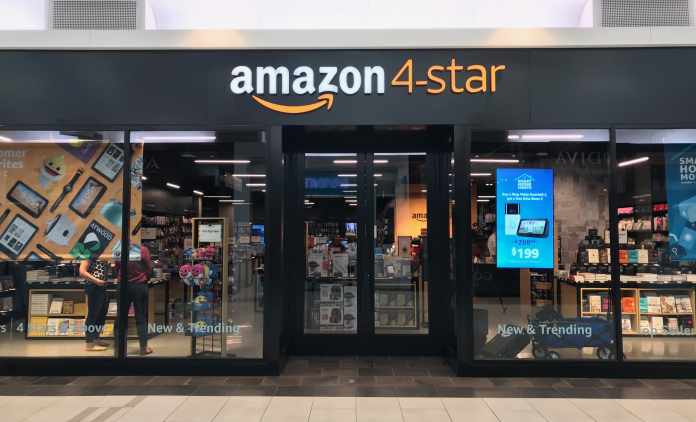Amazon is often referred to as the “retail king”. Let’s see a brief history of the Amazon store.
Amazon’s market share is bigger than Walmart, eBay and Target combined – meaning it is controlling the estimated 44% of US eCommerce!
There are lots of opportunities from lead generation to global market expansion that this platform offers to the sellers, wholesalers and brands. But that’s not only that! There is more behind the platform than one can imagine. Trust us when we say that there’s more to this platform than Amazon suspension cases.
Oftentimes, Amazon has been fostering and introducing new technological advancements quite ahead of its competition. With its bold and innovative ideas, it grew to the Amazon we all know or at least have an obscure idea of.
Without further ado, let’s dive right into the path Amazon walked up to this day making its founder and current CEO Jeff Bezos the richest man on the Earth.
Table of Contents
Failed Equation and Change in Career Path
Back in 1984, when Jeff Bezos was still a student at Princeton, he came across a differential equation couldn’t solve.
After spending 3 hours and after the help of another student, Bezos came to the conclusion that he was not meant for physics or math and he eventually graduated from Princeton with an electrical engineering and computer science degree.
Trampoline to Success and Setting the Foundation of Amazon
During the beginning of the 1990s, Bezos joined the newly founded hedge fund named D. E. Shaw & Co. In just four years he became the Vice President – fourth senior VP at the age of 30. As he was responsible for expansion and suggesting new business opportunities, he came up with a list of 20 products the company could sell online. The list got denied. Maybe that caused resentment which now leads to so many Amazon suspended accounts? We’ll never know!
Anyway…
This was the climax and the end of Bezos’ patience (we assume), which led him to quit the job and put the first layer of foundation of the soon-to-be retail empire.
Strategic Importance of Seattle and the Brand Name
Firstly, Bezos chose Seattle as the city had the reputation of the tech hub.
Secondly, because of Washington’s lack of sales tax, they simply did not have to charge their customer base.
After a misunderstanding which caused the initial name of the platform, Bezos decided to go with the name Amazon for two major reasons:
- Amazon for the largest river in the world as Jeff Bezos imagined Amazon to be the biggest fish in the retail ocean.
- Jeff Bezos wanted a name which started with “A”. Strategic enough as the name would appear first on all website and stock market listings.
The Launch of Amazon and Going Public
Remember the list of 20 products? Eventually, Jeff Bezos chose to launch Amazon as an online bookstore as he realized that books are in high demand everywhere.
Bezos registered Amazon.com on November 1, 1994.
$10.000 personal investment, garage as an office and Home Depot doors as working desks!
Did the garage part ring any bell? (Apple, Microsoft, Google, Dell just to mention a few)
Already on July 16 of the next year, the website was ready for the beta test and in just a month, Amazon sold books across the 50 states and 45 countries around the US and the whole world.
And by the end of 1995, Amazon already had 250 employees.
In 1997, after 3 years of blood, sweat and tears, 1 million customer accounts but no major profit, Amazon went public with a value of $300 million adjusted from $18 after subsequent stock splits.
The Expansion to Other Areas
From 1998, following Bezos’ initial plan on expansion, the platform grew to offer more than just books. With its third-party selling and Associates program, Amazon was offering video games, music, electronics, toys and games to the customers.
Bringing some innovation to the table: in 1999, Amazon introduced the 1-click option of instant ordering and patented its game-changing innovation for 2 decades.
Among the companies who will try to illegally use this technology and get filed with a lawsuit for patent infringement was Barnes & Noble – Amazon’s first and foremost competitor in the book world.
The Launch of Prime membership
First of its kind, revolutionary and innovative service, which is the culprit of most of the unplanned orders – Prime – was launched in 2005. Amazon annual perk bundle including two-day shipping for only $79.
In the face of setting a goal of customer’s ultimate satisfaction, the greatest invention in retail history was born and forevermore destined to alter the customer buying psychology.
At the time of writing, Amazon Prime is available in 19 countries with over 200 million members.
The last Prime Day sales in 2020 hit $10.4 billion.
The Launch of Amazon Web Services
In 2006 Amazon Web Services (AWS) was launched to offer data on Internet traffic patterns.
This was fast-forwarded with the launch of EC2 (Elastic Compute Cloud), a service that rents out computer processing power to other companies and S3 in 2007 (Simple Storage Service), which rents data storage over the Internet.
Among the famous brands – Netflix, Pinterest, Twitch, Linkedin, Facebook utilize AWS services.
Raising the Standards with Fulfilled by Amazon
The initial plan was not to store inventory.
However, in 2006, Amazon began offering this service to sellers to ship the order on their behalf for a fee.
Its inventory management allowed Amazon to take full control over the product quality and timely delivery.
In 2012, Amazon even purchased Kiva Systems, a robotics company to automate the inventory management.
Kindle
After building a retail empire from just selling books, Amazon couldn’t just sit around and not do the “what’s-next-on-Amazon-thing”.
Bezos revisited its online bookstore roots in 2007 and capitalized on their e-reading device – Kindle. This brought another uproar and innovation sparkle to the game and created an entirely new reading experience for the customers.
Kindle is the epitome of single-purposed, no-distraction hardware: the perfect place the bookworms could lose themselves in.
It took Amazon 3.5 years to build Kindle to introduce this reading-gem to its loyal customer base. Initially having the “Fiona” code name, Kindle led to dramatic growth in e-book publishing and in 2012, more e-books were sold on Amazon compared to hard copies.
Shaking the Innovation Sky with Echo
Another invention which took development prior to its launch but was worth the wait.
Well, it was more unexpected and yet another innovation slap on Google’s face.
In 2015, Echo – a virtual assistant was introduced to the public.
To say the customers liked it, is saying nothing at all.
Who does not want a smart in-house device that is smart, links to numerous other apps, has crazy cool functions and offers the comfort of voice search.
Final Thoughts
Making customer satisfaction a number 1 priority is how Amazon remains a talking point for two decades.
Take this inspirational success story as a milestone to delight your customer base and make impactful changes in their everyday lives.
So, where is Amazon now at times of pandemic? It hit the stock market at $1.5 trillion, plans to launch Prime air delivery through drones and only God (in the face of Bezos) knows what else.










Thank you for your sharing. I am worried that I lack creative ideas. It is your article that makes me full of hope. Thank you. But, I have a question, can you help me? https://www.binance.info/sv/join?ref=53551167
Wow, amazing weblog structure! How long have you been running a blog for?
you make running a blog glance easy. The entire look of your website is magnificent, let
alone the content material! You can see similar here najlepszy sklep
Good day! Do you know if they make any plugins to help with
SEO? I’m trying to get my website to rank for some targeted keywords but I’m not seeing very good gains.
If you know of any please share. Kudos! You can read similar blog
here: Hitman.agency